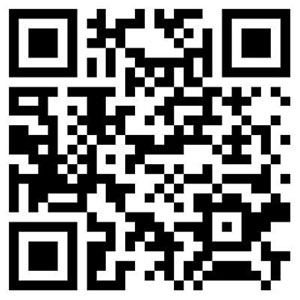If a picture is worth a thousand words, a QR or “Quick Reference” code could be worth a million. That’s because it provides the viewer with a doorway from a printed medium to unlimited interactive online content.
Applications include incorporating the QR codes in traditional print ads as well as direct mail advertising. Other applications include traditional signage, wide format P-O-P posters, tradeshow and museum exhibits, and window graphics and store window displays.
Using QR codes and related technologies, such as Augmented Reality, allows businesses to deliver their current online messaging to a mobile audience and engage shoppers in real time, which can stimulate impulse sales. I had also thought that there was great promise in the use of QR codes on packaging, linking the code to instructional manuals, technical bulletins, or YouTube “how-to” videos.
The $64,000 question: Will consumers today use QR codes?
One huge stumbling block to marketing success is that, while most shoppers have seen QR codes in stores, most of them don’t have a clue about what they are and how to use them.
Fewer than 20 percent of smartphone owners have downloaded the app required for scanning. A very high percentage of those tend to be rich, tech-savvy guys, which may not correspond to your target audience.
If that wasn’t a problem, the other major issue is that most of those in the know won’t take the time to whip out their cell phones and scan the codes.
Inappropriate use of QR codes has also turned off some of those consumers who have scanned them. Who wants to scan a code only to be directed to a crass commercial message?
Before you pass judgment and proclaim that QR codes are dead, let me describe what they are and how they could better be used.
What are QR Codes?
A QR Code is a type of barcode. If you have downloaded the correct app for your smartphone, you can scan QR codes.
By scanning the code, your phone links to online content—a Web site, YouTube video, interactive game, augmented reality experience, PDF, or discount coupon.
How are QR Codes used in marketing?
Two-dimensional print media is static and constrained by mechanics such as size, as well as by production costs. Linking to an online environment shatters any messaging boundaries, making your message dynamic and interactive.
By connecting to online content, a marketer can provide potential customers with much more product information at a significantly lower cost per impression. The key is to provide real informational value to the consumer.

The QR code should link to a landing page that is relevant to the messaging in the promotion rather than to a non-specific Web site homepage. The landing page must also be formatted for ease of view on a mobile device.
How are QR Codes used in wide format applications?
By providing new avenues for communication, QR codes are ideal for P-O-P posters, tradeshow displays, and on museum exhibits because there is limited space for messages. Used in outdoor applications such as signage, these codes should be positioned so consumers can easily scan them.
Fleet graphics and outdoor billboards may not be good candidates for QR codes because it may be next to impossible to scan a code when either the viewer or the viewed is travelling at high speeds. What’s more, marketers don’t need to compound the problems that we already have with distracted drivers.
How can you create a QR Code?
Converting a URL is easy. Better yet, at many QR code generator sites, it’s free and only takes seconds.
Once you’ve created the QR code for yourself or one of your customers, just insert it into your layout and print it.
When incorporating a QR code into one of your layouts, keep in mind the overall size must be at least one-by-one-inch. Smartphones will be unable to scan anything smaller.
Also be sure to provide plenty of white space around the code so that it’s noticed and that the surrounding area doesn’t interfere with the scan.
While you aren’t limited to black-and-white images, they are the easiest to scan. If you use colors, make sure that there’s high contrast between the highlight and shadow.
Effective advertising usually includes a call to action. The same holds true for QR codes.
If you want customers to scan the QR code, provide them with a benefit enticing enough for them to take action. An in-store P-O-P display may incorporate the phrase: “Scan this Code for a 15% Off Coupon.”
Test, don’t guess.
Prior to full production, print a prototype and test the QR code to make sure that it’s easy to scan on a variety of smartphones using different apps. Also perform test scans at a number of distances and from several angles.
After launching a promotion, be sure to track the success of the program by recording how many consumers scanned the QR code and responded to your call to action—whether it was a purchase at a discount store, participation in a survey, a YouTube viewing, or a Facebook like.
By Jim Hingst











